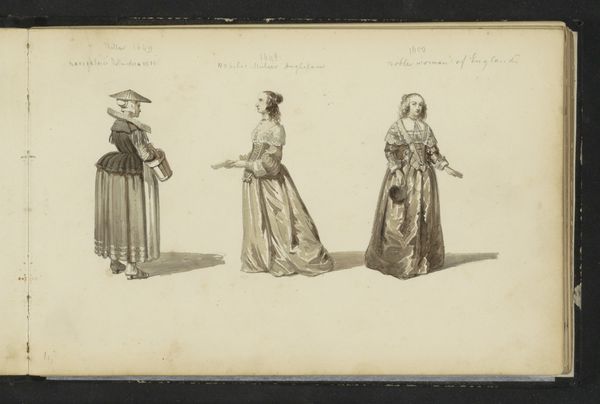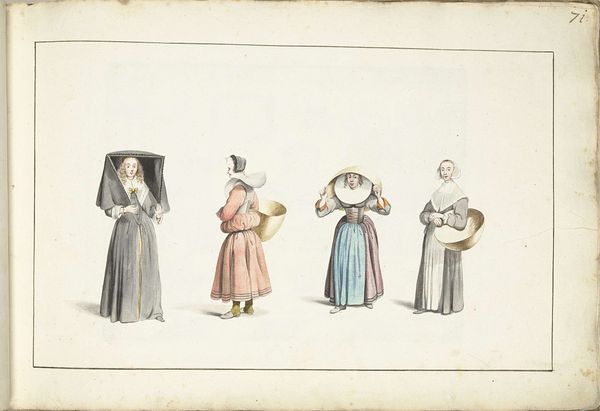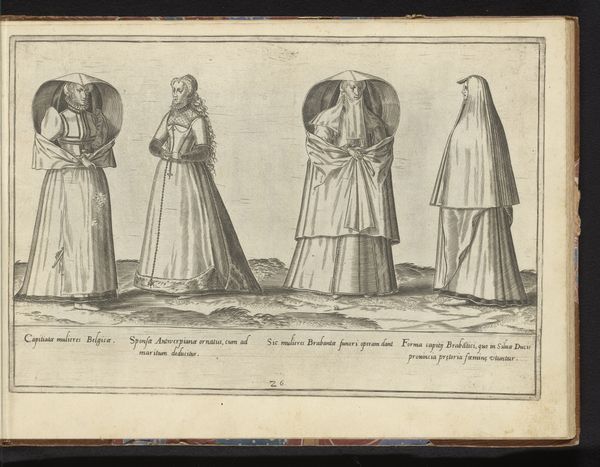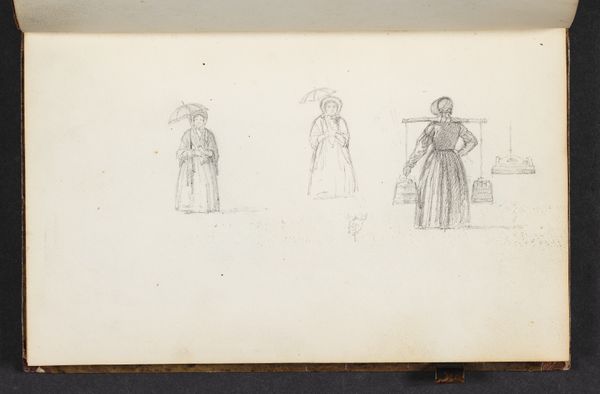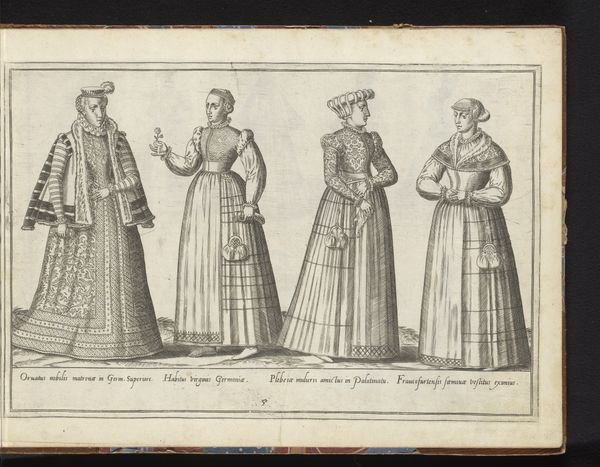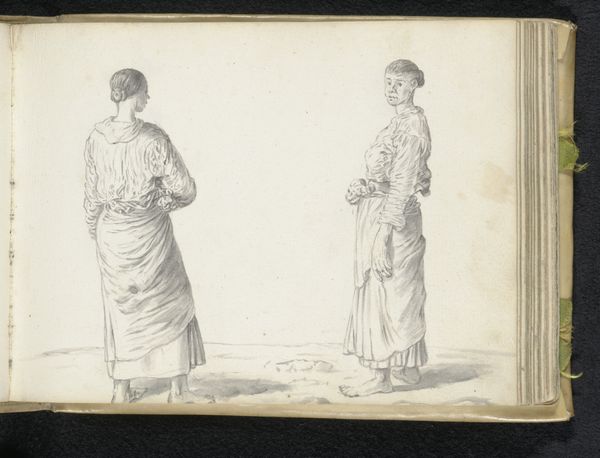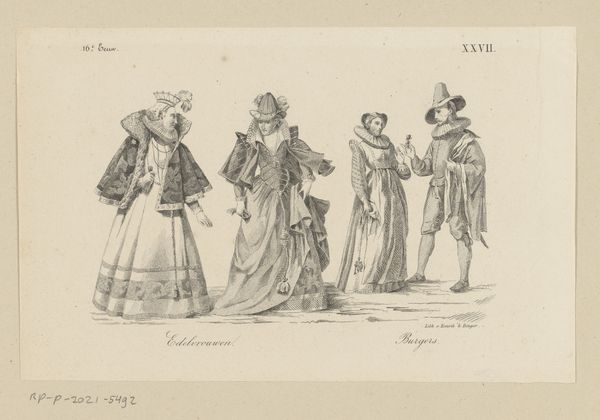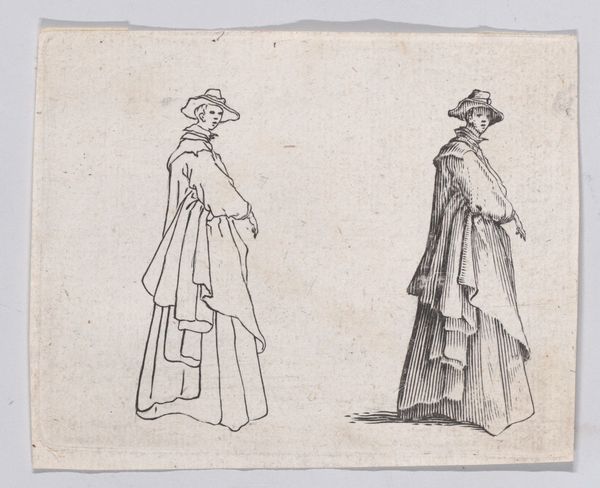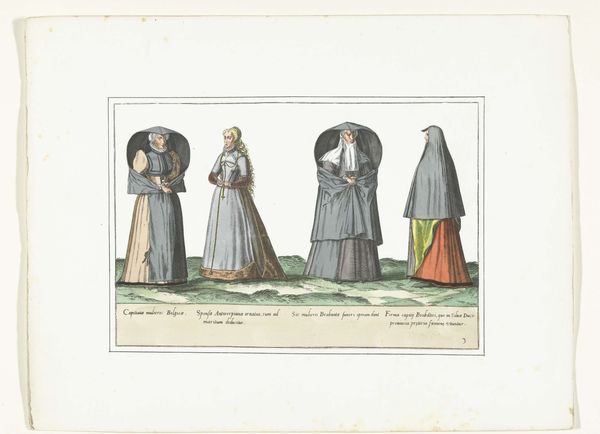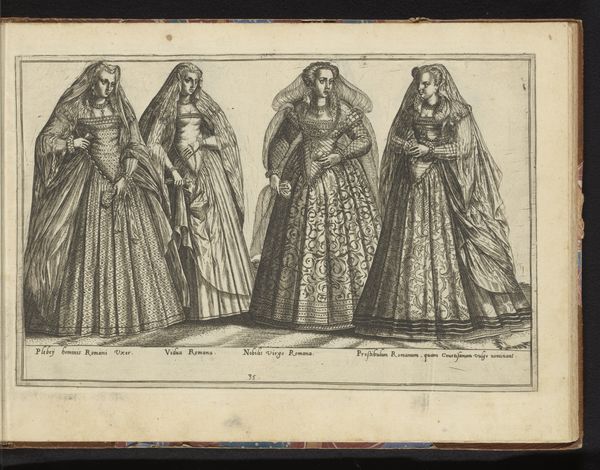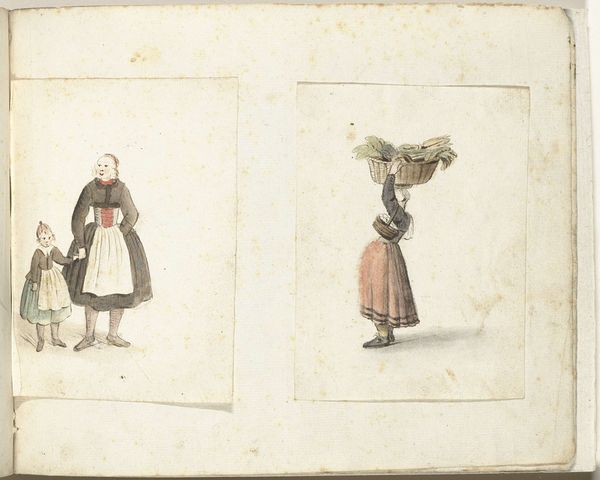
drawing, pencil
#
drawing
#
pencil
#
genre-painting
Copyright: Rijks Museum: Open Domain
Curator: Welcome. Here we see "Three Women in Seventeenth-Century Clothing," a pencil drawing attributed to Cornelis Springer, dating from approximately 1846 to 1882, and residing here at the Rijksmuseum. What's your immediate take on this trio? Editor: Stark. Austere. It's a very subdued palette; almost monochromatic, save for subtle tints. Their posture gives the impression of being simultaneously posed and yet frozen in their steps by the weight of their historical placement. Curator: Indeed. These depictions point to the persistent influence of the Dutch Golden Age. Genre painting saw a considerable revival during the nineteenth century. Springer wasn't just an artist; he was very much an archivist of his time, acutely aware of his artistic lineage. Editor: So, he’s participating in a construction of history? Are these women rendered accurately, or idealized representations? Curator: It’s difficult to definitively say given the temporal distance. Springer could have very well encountered similar individuals. Regardless, it evokes a specific narrative about Dutch identity and its relation to gender roles. The women aren’t just wearing clothing, they’re embodying specific social roles within that society. Editor: Looking at it through that lens, the clothing almost operates as a symbolic constraint. The fabrics seem heavy and confining, perhaps reflecting the societal limitations placed upon them. The hats, the collars – they all form an imposed boundary. The one holding the basket with rosary beads looks especially contained by all that fabric and framing, down to the small view port for the face. Curator: A powerful perspective. But perhaps the meticulous detailing served to validate specific, accepted archetypes in Dutch society. To see them, and recognize yourself as valid is potentially very encouraging. Editor: I can respect that. However, for me, it evokes a sense of observation rather than engagement. A distant echo of what once was. But a crucial echo for conversations around Dutch cultural identity nonetheless! Curator: Absolutely. These echoes provide space for examining the layers of Dutch society throughout time. Thank you. Editor: A necessary, albeit complicated, perspective, to be sure.
Comments
No comments
Be the first to comment and join the conversation on the ultimate creative platform.
